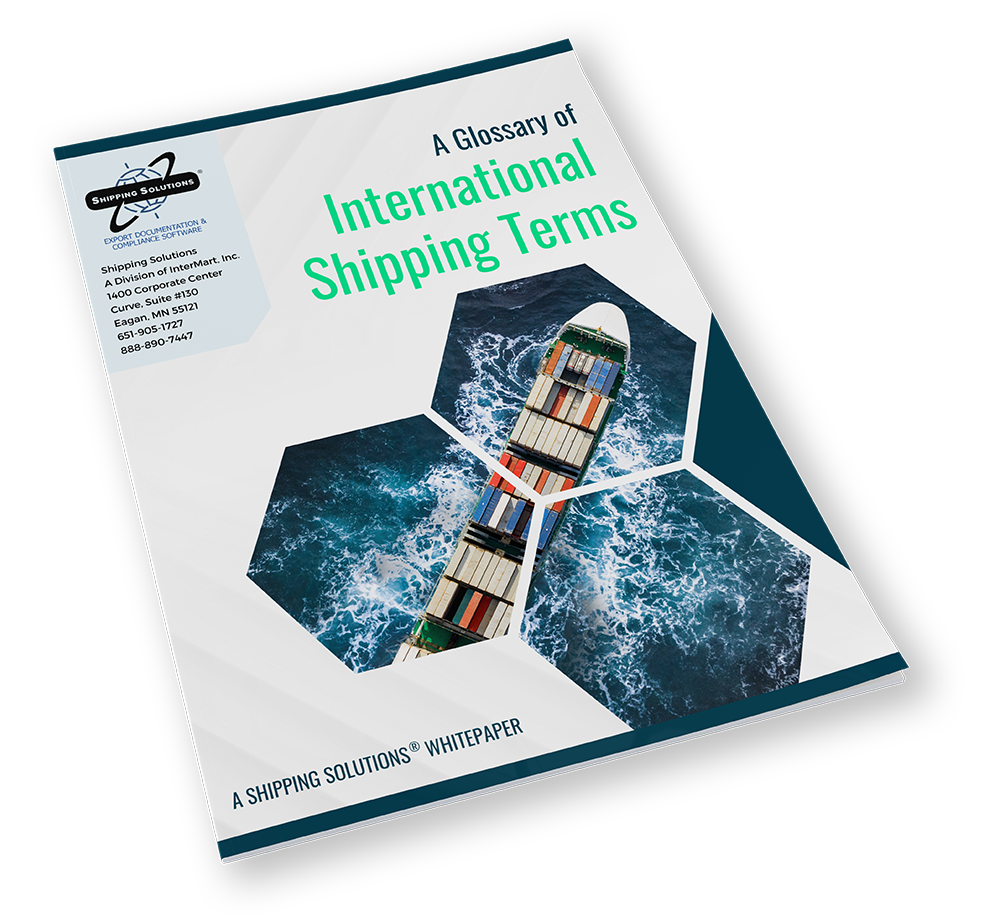The International Trade Blog International Sales & Marketing
10 Terms Exporters Should Know about Intellectual Property
On: March 22, 2021 | By:  David Noah |
6 min. read
David Noah |
6 min. read
 For exporters, intellectual property rights are a critical and challenging aspect of doing business internationally. We spoke to Barbara Grahn at Fox Rothschild LLP, about several terms relating to intellectual property that exporters must understand. We’ll discuss terms as they relate to patents and trademarks.
For exporters, intellectual property rights are a critical and challenging aspect of doing business internationally. We spoke to Barbara Grahn at Fox Rothschild LLP, about several terms relating to intellectual property that exporters must understand. We’ll discuss terms as they relate to patents and trademarks.
It’s crucial to have a working knowledge of these terms, but keep in mind that this is not an exhaustive list of every term you need to know when working with intellectual property.
1. Intellectual Property
Intellectual property (IP) includes a broad collection of rights relating to works of authorship, inventions, designs, trademarks and trade secrets. Intellectual property rights can be protected in individual countries under copyright law, patent law and trademark law.
2. Infringement and Enforcement
Trademark infringement can be intentional, such as the act of passing off, pirating or counterfeiting goods or marks, but also includes unintentional use of a confusingly similar mark in a way that creates confusion among consumers as to the source or sponsorship of the goods or services.
Patent infringement is the act of making, using, selling or importing (into the U.S.) an apparatus (or method) that is covered by the claims of a patent.
Enforcement involves the policing, watching and monitoring of your intellectual property in order to protect it from or fight back against infringement. This is done individually and through the courts.
3. Priority Date
A priority date, as it applies to an invention, is typically the first date that you put a patent application on file, whether it’s a non-provisional patent application or a provisional patent application. Priority for trademarks is generally the date you file an application, or the date on which you begin using the mark, depending on the country.
4. United States Patent and Trademark Office
The United States Patent and Trademark Office (USPTO) is an agency of the U.S. Department of Commerce whose role is to grant patents for the protection of inventions and to register trademarks. It serves the interests of inventors and businesses with respect to their inventions and corporate products and service identifications. It also advises and assists the President of the United States, the Secretary of Commerce, the bureaus and offices of the Department of Commerce, and other agencies of the government in matters involving domestic and global aspects of intellectual property.
5. Trademark
A trademark "is a word, symbol, name, slogan or combination of thereof that identifies and distinguishes the source or sponsorship of goods and may serve as an index of quality." Service marks perform the same function for businesses dealing in services rather than goods.
The U.S. provides protection for a mark, registered or not, if it is used in the U.S. or between the U. S. and another country, or has become well-known through international use. In many other countries, trademark rights are obtained through registration, although some countries provide protection for marks based on use or for internationally famous marks.
You can read more about trademark basics here on the USPTO’s site.
6. Trademark Infringement and Enforcement
Trademark and trade name infringement is defined using the following terms:
Counterfeit
In the U. S., a counterfeit mark is defined as a “spurious (false, non-genuine) trademark, which is identical to, or substantially indistinguishable from, a federally registered U.S. trademark” (15 U.S.C. § 1127).
Confusingly Similar
The legal standard for determining infringement where the mark is not counterfeit is "confusingly similar." The test for likelihood of confusion is whether the mark is likely to cause confusion or mistake or to deceive the average consumer. The standard is similar in most other countries.
Gray Market (Parallel Imports)
Gray market goods are genuine goods bearing a trademark and imported into a market and sold there without the consent of the trademark owner.
Trademark enforcement is typically adjudicated through the courts. According to the USPTO website, in order to support a trademark infringement claim in court, a plaintiff must prove ownership of a valid mark, that it has priority (its rights in the mark(s) are senior to the defendant's), and that the defendant's mark is likely to cause confusion in the minds of consumers about the source or sponsorship of the goods or services offered under the parties' marks.
7. Trademark Registration
In the U.S., registration of a trademark is not mandatory. However, it has several advantages, including public notice of the registrant's claim of ownership of the mark, a legal presumption of ownership, nationwide rights, and the exclusive right to use the mark on or in connection with the goods and/or services listed in the registration.
You can find out how to apply for a trademark here. Registration of a trademark in the U. S. does not confer trademark rights in any other country.
8. Patent
In the United States, a patent is the grant of a property right to the inventor, issued by the USPTO. Generally, the term of a patent is 20 years from the earliest date that the application for patent was filed, subject to the payment of maintenance fees in the U.S. and annuity fees in foreign jurisdictions.
U.S. patent grants are effective only within the United States, U.S. territories and U.S. possessions.
There are three types of patents: utility patents, design patents and plant patents. You can read more about the statute and different types of patents on the USPTO website.
9. Patent Infringement and Enforcement
Patent Infringement
For devices, if someone infringes the claims of a patent, it’s because they are making, using or selling a device that includes each and every limitation of a claim in a patent. The act of exporting out of the U.S. isn’t an infringement, but the act of importing into the U.S. is.
If you’re exporting a device from the U.S. into Europe, for example, the importation into Europe may be an infringement if the device is sold in Europe and covered by the claims of a patent validated in the national country where the device is being sold.
For importations into the United States, U.S. Customs screens for patent infringement only when enforcing an exclusion order generally issued by the U.S. International Trade Commission as a result of a patent investigation.
Patent Enforcement
It’s important to remember that a patent owner typically enforces his or her rights through the courts. You can enforce through the U.S. International Trade Commission or U.S. district courts.
Enforcement in foreign countries is different in each country, but it’s typically done through a court. Alternatively, sometime a patentee is aware of the infringement, contacts the alleged infringer and the parties settle outside of court.
10. Patent Application
There are two types of patent applications: provisional patent applications and non-provisional patent applications.
- Provisional patent applications are never examined. Typically, they are put on file as a placeholder to secure a priority date. Applicants may file a provisional application when a device isn’t fully developed or when it’s fully developed, but the applicant wants to protect the earliest priority date they can.
- Non-provisional patent applications are examined, and they include international applications filed under the Patent Cooperation Treaty. Non-provisional patent applications have different requirements—the chief requirement being an inclusion of claims because the patent application is actually being examined.
The patent process can be lengthy and expensive.
More Information
As mentioned previously, there are way more than 10 terms you need to know to understand intellectual property. These resources can provide more information:
- The USPTO website is loaded with helpful material about intellectual property, including patent and trademark application processes, FAQs and legal information.
- Importing Basics: Intellectual Property Rights gives a basic look at IP and the consequences of infringement.
- A Glossary of International Shipping Terms includes definitions important to IP protection, as well as scores of other terms and abbreviations used in international trade.
Like what you read? Subscribe today to the International Trade Blog to get the latest news and tips for exporters and importers delivered to your inbox.
This article was first published in March 2015 and has been updated to include current information, links and formatting.

About the Author: David Noah
As president of Shipping Solutions, I've helped thousands of exporters more efficiently create accurate export documents and stay compliant with import-export regulations. Our Shipping Solutions software eliminates redundant data entry, which allows you to create your export paperwork up to five-times faster than using templates and reduces the chances of making the types of errors that could slow down your shipments and make it more difficult to get paid. I frequently write and speak on export documentation, regulations and compliance issues.



